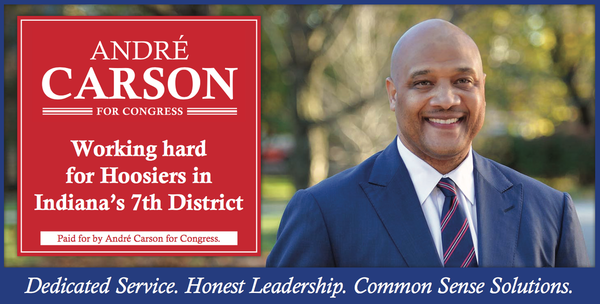The Stupidest of Policies
The GOP is vacillating between contradictory claims that President Trump’s tariffs are either negotiating tactics designed to end tariffs everywhere or a long-term strategy to onshore U.S. manufacturing. We have no evidence that either approach has worked anytime, anywhere in the past 250 years. Assuming this time isn’t different, we should measure the costs of Trump’s tariffs.
Indiana imports over $100 billion in manufactured goods, most of it used to produce other manufactured goods. Two months ago, the average effective tariff rate was about 2.5 percent. Early last week, that rate across the 50-plus countries our manufacturers purchase from rose to 20.3 percent (my calculations). Then, mid-week, it dropped to about 18 percent.
This whipsawing of tariff rates has unnerved financial markets, which on Wednesday, were toying with a liquidity crisis. That should be unsurprising.
Trump’s 90-day pause on many tariffs, announced Wednesday, merely delayed a tax on Hoosier factories that would be equivalent to a 40 percent hike in labor costs or a 15.5 percent value-added tax on our manufacturing production. It is just about as large as all the state taxes we collect in a year.
We’ve seen some of this before. Trump’s first round of tariffs in 2018, which were a fraction of those we have now even after his pause, caused Indiana manufacturing employment growth to stall within nine months. By the start of 2019, we were in a factory recession and lost 10,000 jobs by the start of COVID-19. Indiana today is 20,000 factory jobs short of when Trump first imposed tariffs.
Even the lower rates are enough to push Indiana into a recession.
Overall costs of these tariffs on American household income range close to $2,500 this year. That is how much more goods and services will cost due to tariffs working through the economy. It is pretty easy to see how these tariffs will affect manufactured goods, but the effect will also slip into services.
For example, automobile production costs will rise by 8 percent to 15 percent, so auto insurance firms will have to raise prices. Expect your car insurance to bump up by double digits by fall. It will be more expensive to build or repair a home, so your homeowners plan will rise, probably more like 5 percent to 7 percent.
Don’t mistake these price increases for inflation. As everyone knows inflation is bad, but inflation affects both prices and wages. Tariffs will only work on prices. This will be far more unpleasant.
The stock market is down, as well. As I write, this is a wealth reduction of about $10 trillion. The stock market response is a rational determination of the long-term declining value of American companies. It is also a response to the stunning uncertainty that Trump’s immature decision-making process is imposing on the world economy.
Households observing declining wealth cut back on spending. The consumption losses are modest—maybe 5 percent of the total lost wealth. But that is $800 billion, a spending cut of more than 2.8 percent of gross domestic product.
That, folks, is sharp recession. But, the specter of history is much worse.
The best modern example of this the now infamous Smoot-Hawley Tariffs, passed by a Republican Congress in 1930. These tariffs deepened and lengthened the Great Depression—by how much is a matter of academic analysis, but whether it did so is a sure thing.
The electoral effect of Smoot-Hawley was swift and clear. In 1932, the Democrats ran on an anti-tariff platform, picking up 97 House and 12 Senate seats.
Of course, the damage was done. The trade war pummeled economies around the world, fueling the rise of fascism and communism—and brought us a world war. The Smoot-Hawley tariffs weren’t wholly to blame, but American voters saw fit to give the GOP congressional majorities for only four of the next 50 years.
A major post-war goal of American foreign policy was free trade. We did so not out of kindness, but out of clear-eyed understanding that trade builds alliances and military partnerships.
The post-World War II world order served America and Americans well. Our economy has consistently outperformed the remainder of the world in every decade of the post-war era. We have run a trade deficit almost constantly since the 1940s with no ill effects.
Manufacturing employment worldwide has been shrinking for decades—it peaked in China 20 years ago. The argument that America has shipped millions of jobs overseas in a highly globalized market is easy to understand, appealing to folks living in Rust Belt cities, and offers a low-cost remedy. But it is wrong.
American factory employment peaked in 1979, but factory production has been near a record for each of the Biden years. We would’ve hit a new record in 2025 if Trump was not so woefully uninformed.
We are great at making things—so good, indeed, we do so with far fewer workers. Calling this deindustrialization is abuse of the language. For every factory job we lost, we created more than 10 non-factory jobs, which, on average, pay better, have more stable employment and less health risk than manufacturing. Still, many places and people have failed to adapt to these changes.
The Midwest of full of places that did not adapt. I know it is tempting to blame free trade for their problems, and plenty of demagogues exploit that fiction. There are even plenty of good people who believe them. But, they are wrong.
The challenge before us is to end this tariff nonsense once and for all. This Congress should take back the president’s ability to impose tariffs. If they don’t, then the next one, with veto-proof majority, almost surely will.



